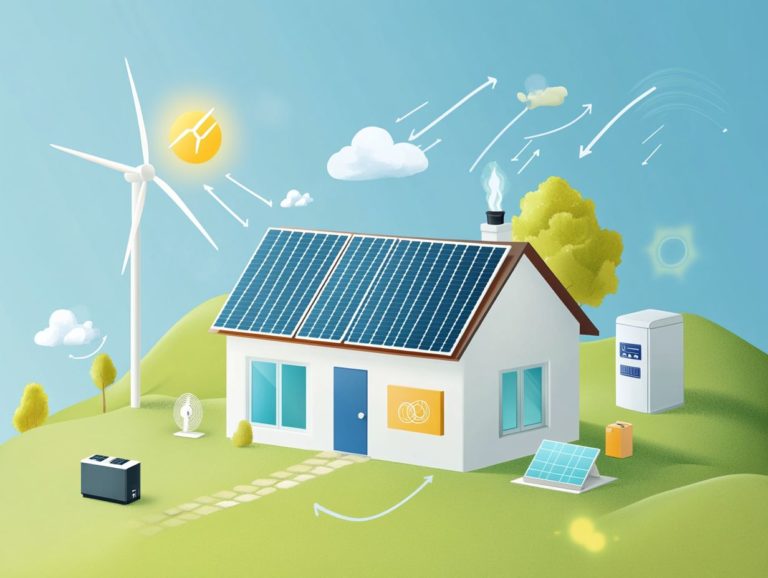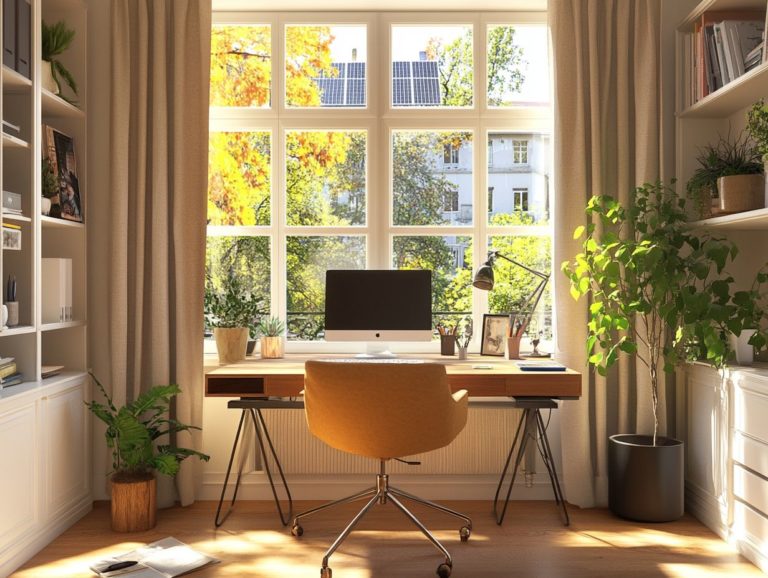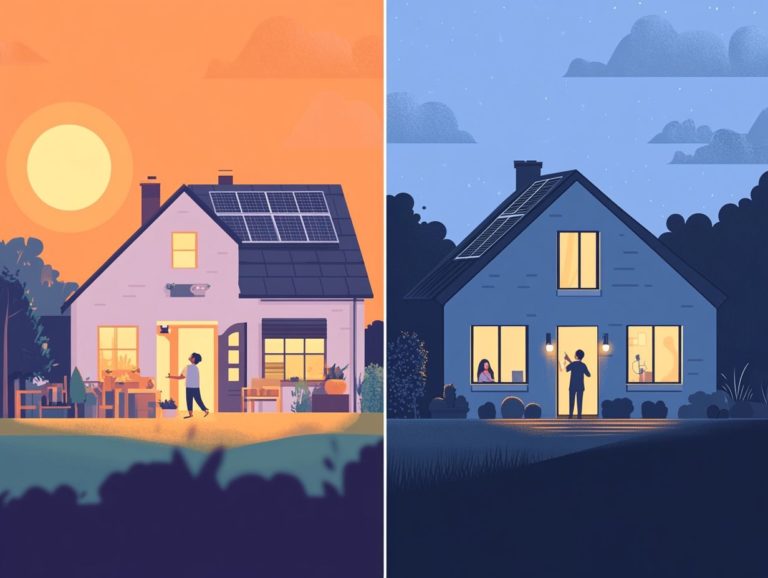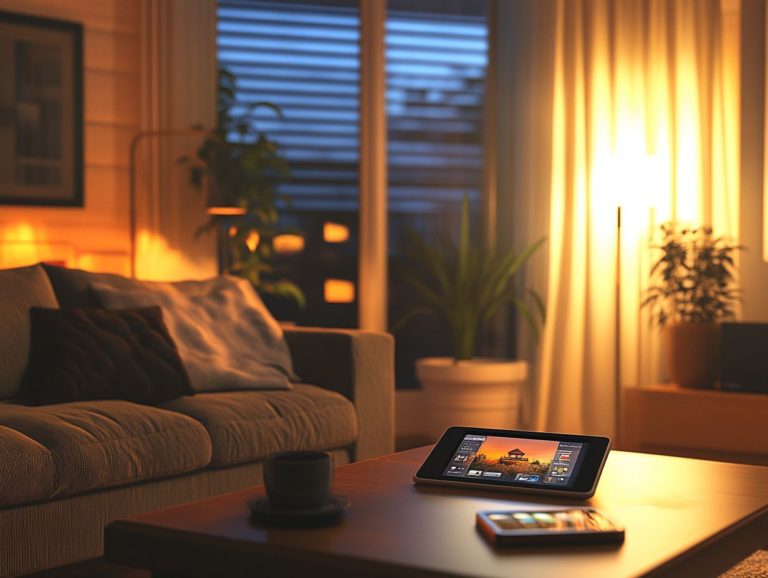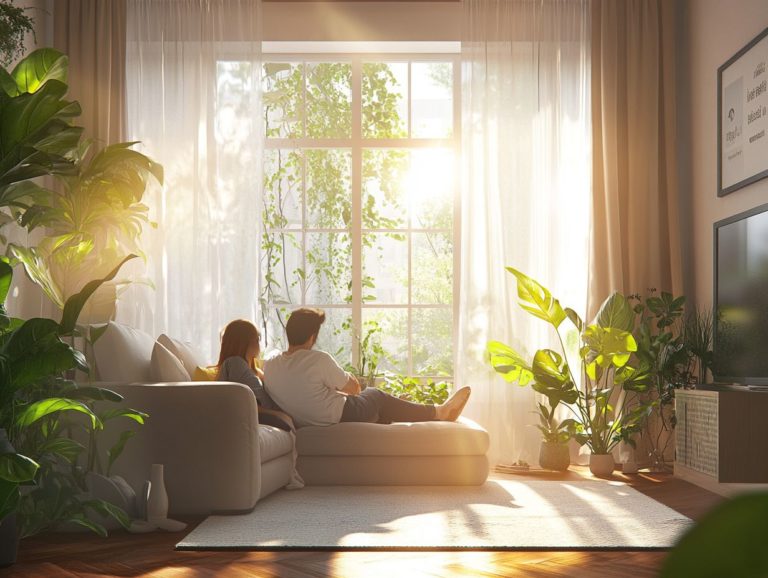How to Reduce Energy Consumption in Old Homes?
Reducing energy consumption in older homes isn’t merely a trend; it s crucial to act now for your wallet and the planet, especially in historic buildings.
By examining common sources of energy waste and conducting a check-up for your home’s energy use, you can pinpoint practical areas for enhancement that could lead to substantial savings. From straightforward tips to more extensive solutions, discover cost-effective strategies that will help you minimize energy use effectively.
Consider renewable energy options like solar panels and wood-burning stoves, and take a moment to appreciate the myriad benefits these changes can bring. Start your exciting journey to a greener, more affordable home today!
Contents
- Key Takeaways:
- Common Sources of Energy Consumption in Old Homes
- Cost-effective Ways to Reduce Energy Consumption
- Renewable Energy Options for Old Homes
- Benefits of Reducing Energy Consumption in Old Homes
- Frequently Asked Questions
- What are some simple ways to reduce energy consumption in old homes?
- Is it worth investing in energy-efficient appliances for an old home?
- What role do windows play in energy consumption for old homes?
- Can landscaping help reduce energy consumption in old homes?
- Is it necessary to upgrade the HVAC system in an old home to reduce energy consumption?
- Are there any government incentives or programs available to help reduce energy consumption in old homes?
Key Takeaways:
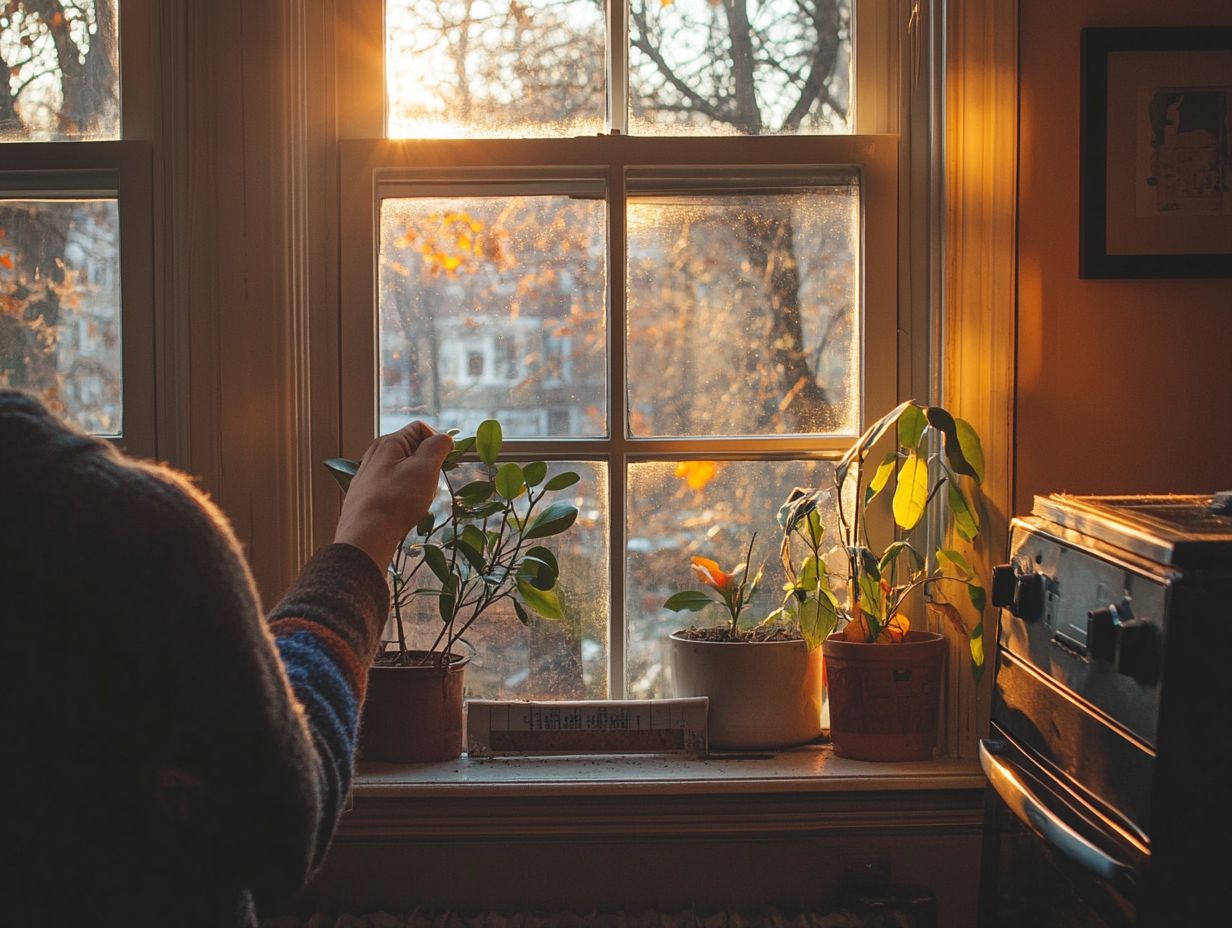
- Reducing energy consumption in old homes is important for saving money and helping the environment.
- Identifying common sources of energy consumption in older homes and implementing simple tips can significantly reduce energy usage.
- Long-term solutions, such as renewable energy options like solar photovoltaic systems and wind turbines, can provide cost-effective and sustainable ways to reduce energy consumption in old homes.
Why is it Important to Reduce Energy Consumption?
Reducing energy consumption is essential for several reasons, particularly in historic buildings and older homes. Not only does it lower your energy bills, but it also enhances energy efficiency and minimizes your environmental footprint. By implementing energy-saving measures, you can enjoy greater comfort while preserving the integrity of these unique structures. This journey often begins with an energy audit to pinpoint areas that need improvement, such as insulation, air leaks, and heating systems.
Consider this: historic buildings use about 40% of all energy in the U.S., contributing substantially to greenhouse gas emissions and climate change. Historic structures, often less energy-efficient, stand to gain immensely from targeted improvements. For instance, upgrading insulation and installing double glazing can significantly cut heating and cooling demands, yielding energy savings of up to 30%. By implementing 5 tips for energy-efficient home renovation, homeowners can make a meaningful impact on energy consumption.
Energy audits do more than highlight potential upgrades; they also offer recommendations for efficient heating solutions, like programmable thermostats, which allow you to set your heating and cooling schedule, saving you money. By embracing energy efficiency in historic homes, you not only help these buildings maintain their historical significance but also play a crucial role in reducing overall energy consumption and safeguarding our planet for future generations. For more tips, check out this guide on how to make your home more energy efficient.
Common Sources of Energy Consumption in Old Homes
Old homes, including Welsh cottages, exude charm and character, but they often hide hidden energy consumption culprits that can detrimentally affect energy efficiency and inflate your bills.
Outdated heating systems, insufficient insulation, and pesky air leaks are common offenders that contribute to energy wastage. It s vital to tackle these issues head-on to enhance the overall energy performance of these beautiful historic buildings and their British heritage.
Ready to save money and help the planet? Start your energy audit today!
Identifying Areas for Improvement
Identifying areas for improvement is crucial for enhancing energy efficiency in your older home. This journey often starts with a detailed energy check that evaluates potential energy-saving changes. This audit will pinpoint issues like inadequate insulation, pesky air leaks, and outdated heating units. By grasping the specific challenges you face, you can prioritize necessary modifications, such as draught-proofing and upgrading to energy-efficient appliances, to effectively reduce energy consumption and improve your comfort.
An energy audit typically involves a detailed inspection of your property, including a thorough examination of windows, doors, and other potential entry points for chilly air. Utilizing tools like blower doors and thermal imaging cameras can significantly aid in accurately identifying these issues. For instance, applying weatherstripping or caulk around your doors and windows will drastically cut those annoying drafts.
Assessing the insulation levels in your attic and basement can highlight areas that need some attention, especially with sustainable materials. Adding insulation where it’s lacking helps maintain a consistent indoor temperature, making your home feel more comfortable year-round.
Implementing these changes enhances your comfort and leads to substantial savings on energy bills. It also contributes to a more sustainable living environment.
Cost-effective Ways to Reduce Energy Consumption
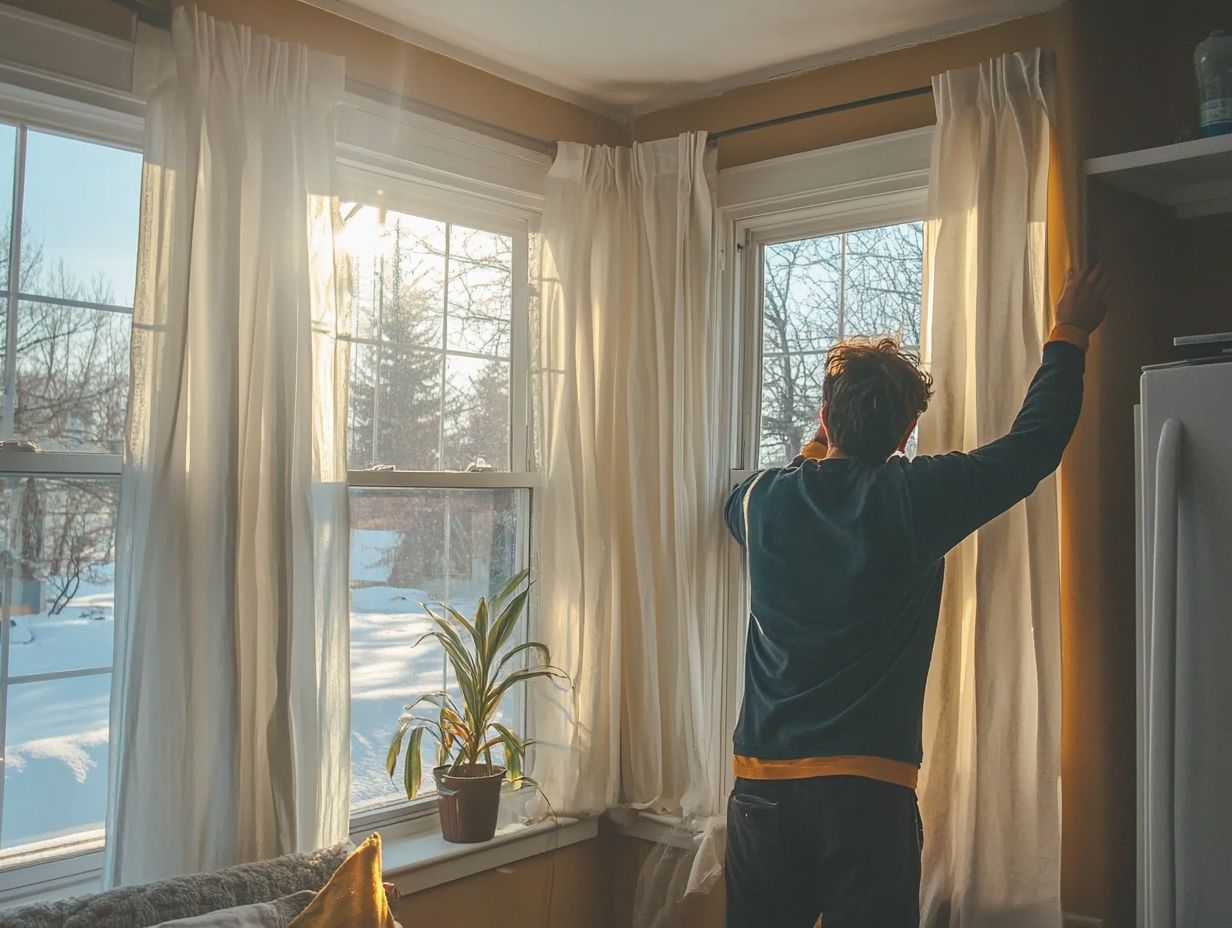
You have a multitude of cost-effective strategies to reduce energy consumption, leading to remarkable improvements in energy efficiency especially in older homes. Consider options like low-flow fixtures, energy-efficient appliances, and retrofitting HVAC systems (Heating, Ventilation, and Air Conditioning) with programmable thermostats. By doing this, you’ll unlock substantial savings on your energy bills.
Not only will these upgrades benefit your wallet, but they will also enhance your overall living environment.
Simple Tips and Tricks
Implementing simple tips and tricks can truly transform your older home. You can significantly reduce energy consumption and enhance energy efficiency by using smart home technology. By employing traditional shutters and hanging heavy curtains, you can minimize heat loss during the colder months while maintaining the aesthetic appeal that preserves your home s historic charm.
Elevate your space further by incorporating programmable thermostats and traditional shutters, allowing for optimal temperature control even when you’re away. This ensures that energy isn’t wasted. Additionally, consider DIY energy efficiency upgrades for older homes like sealing gaps around windows and doors with weather stripping, which can greatly reduce drafts, making a noticeable difference without sacrificing style.
For a more elegant touch, consider using period-appropriate materials like wood or stone for renovations. These choices not only blend seamlessly with your home s character but also offer durability and insulation benefits. By embracing these strategies and utilizing natural building materials, you ll discover effective ways to harmonize modern energy efficiency with timeless design.
Are you ready to start your energy-saving journey today? Take the first step toward upgrading your home for energy efficiency and enjoy a more efficient and comfortable living space!
Long-term Solutions
For homeowners like you aiming for lasting energy efficiency, considering long-term solutions such as solar panel installation can lead to significant savings that benefit both your wallet and the environment today! This includes solar panels that convert sunlight into electricity and capitalizing on renewable heat incentives. Investing in efficient appliances like Energy Star-rated models and making infrastructure improvements in historic buildings not only enhances sustainability but also plays a vital role in preserving Britain s architectural heritage.
Recent case studies illustrate how retrofitting older properties with modern energy systems can significantly lower utility costs while retaining their aesthetic charm. By implementing energy-efficient windows and insulation, your home can enjoy financial savings while also enhancing comfort throughout the seasons. Additionally, consider exploring 5 ways to reduce energy waste at home for further improvements.
Financial incentives, including government grants and tax credits, encourage homeowners to explore these upgrades, reinforcing the link between energy conservation and historic preservation. Successful projects, such as upgrading iconic Victorian homes and historic homes in London, showcase that it’s entirely possible to blend modern energy solutions with the allure of historical architecture. For more insights, check out this guide on how to plan an energy-efficient home renovation, creating a win-win scenario for homeowners and the environment alike.
Renewable Energy Options for Old Homes
Exploring renewable energy options for your historic home can greatly enhance its energy efficiency while contributing to a more sustainable future.
Consider technologies like solar panels, efficient wood-burning stoves, and Rayburn systems. These environmentally friendly alternatives to traditional heating systems and HVAC solutions allow you to lower your energy bills without compromising the unique character of your property. Embracing these innovations, along with DIY energy-saving techniques for homeowners, not only benefits your wallet but also supports a greener planet.
Solar, Wind, and Other Alternatives

Solar and wind energy stand out as leading renewable energy alternatives that can significantly enhance energy efficiency in older homes, offering sustainable solutions to meet your energy demands. Conducting an energy audit allows you to pinpoint compatibility and evaluate the feasibility of incorporating solar panels or small wind turbines into your historic property.
By tapping into these resources, you not only play a part in reducing carbon footprints and supporting the Green Police but also open the door to substantial long-term savings on your monthly utility bills. It’s crucial to balance the initial installation costs with the anticipated energy savings. While solar panels often require a higher upfront investment, they come with potential tax incentives and costs that decrease over time. On the other hand, wind turbines may need more space and a thorough site assessment to gauge wind viability.
Grasping these intricacies gives you the power to make informed decisions that align with your specific energy needs and those outlined by organizations like the National Trust and the Centre for Sustainable Energy.
Benefits of Reducing Energy Consumption in Old Homes
Reducing energy consumption in older homes, including old houses and historic homes, offers a wealth of advantages that go beyond just saving on energy bills. It enhances energy efficiency, preserves the charm of historic buildings, and makes a meaningful positive impact on the environment.
By incorporating sustainable materials, natural building materials, and practices, you play a vital role in fostering a greener future while ensuring the longevity of your cherished property.
Saving Money and Helping the Environment
Saving money on energy bills is one of the most tangible perks of reducing energy consumption in older homes. This seamlessly aligns with improving energy efficiency and using sustainable materials. You not only enjoy lower costs but also play a significant role in reducing your environmental impact. This means making a meaningful contribution in the fight against climate change.
By directing the financial savings from decreased energy expenditures into further energy improvements, you can create a virtuous cycle that enhances your comfort while promoting sustainability. For example, investing in high-quality insulation materials like recycled denim or cellulose can drastically cut your heating and cooling costs while minimizing waste. Additionally, consider following these top energy-saving tips for homeowners to maximize your efforts.
Switching to energy-efficient appliances made from sustainable resources doesn t just lower your resource consumption. These choices save you money over time and help shrink your carbon footprint, which refers to the total greenhouse gases emitted by your actions. Ultimately, this fosters a healthier planet for future generations.
As you embrace these exciting changes, the ripple effect can inspire your community to consider similar transitions. This amplifies the environmental benefits for everyone involved.
Frequently Asked Questions
What are some simple ways to reduce energy consumption in old homes?
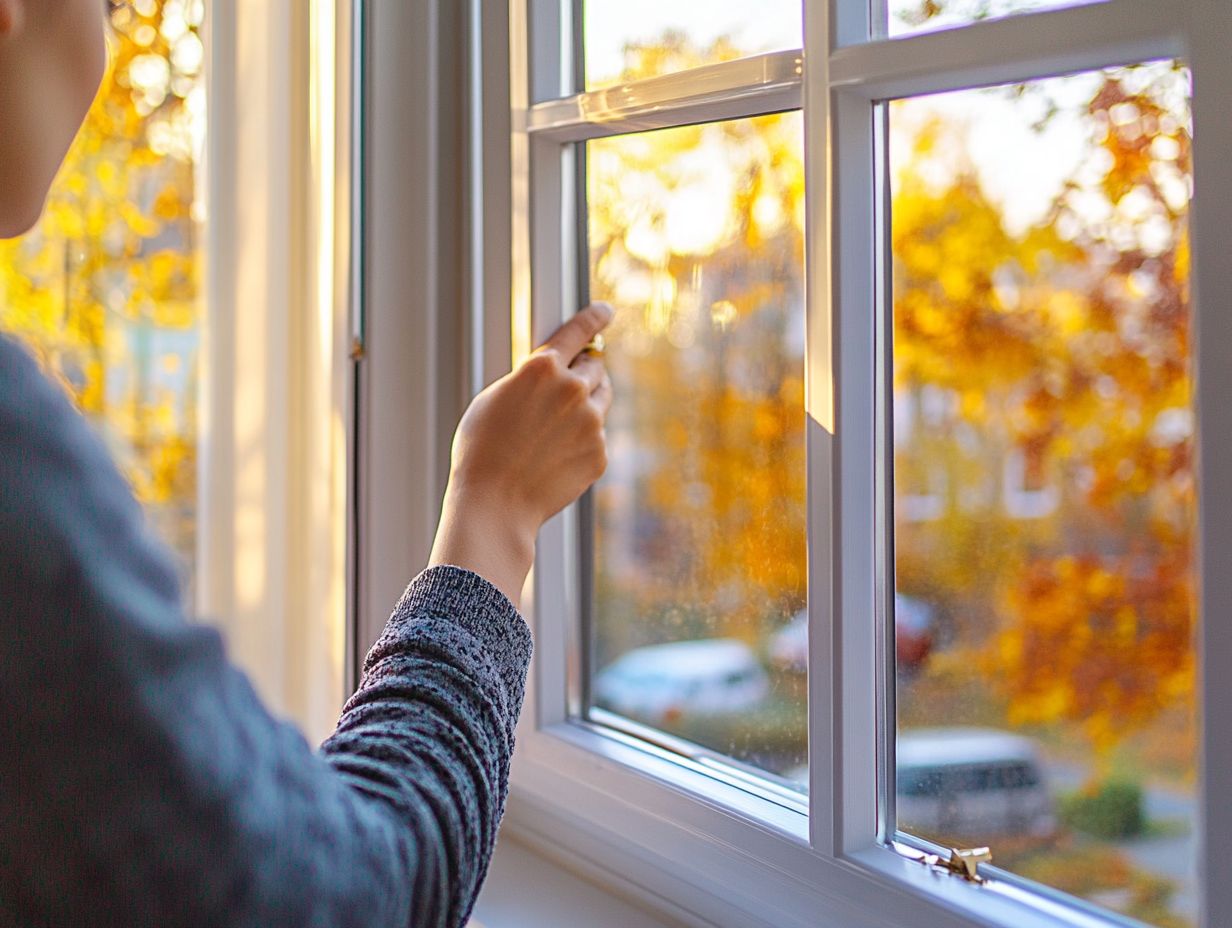
Some simple ways to reduce energy consumption in old homes include sealing air leaks, upgrading insulation, and switching to energy-efficient lighting.
Is it worth investing in energy-efficient appliances for an old home?
Yes! Investing in energy-efficient appliances can significantly reduce energy consumption in old homes and save money in the long run.
What role do windows play in energy consumption for old homes?
Windows are a major source of energy loss in old homes. Investing in energy-efficient windows or adding weather stripping can greatly reduce energy consumption.
Can landscaping help reduce energy consumption in old homes?
Yes! Planting trees strategically around an old home can provide shade and reduce the need for air conditioning, ultimately reducing energy consumption.
Is it necessary to upgrade the HVAC system in an old home to reduce energy consumption?
Upgrading an old HVAC system to a more energy-efficient one can greatly reduce energy consumption. However, simple maintenance tasks like changing air filters and getting regular tune-ups can also make a difference.
Are there any government incentives or programs available to help reduce energy consumption in old homes?
Yes! There are various government incentives and programs available, such as tax credits and rebates, that can help offset the cost of energy-efficient upgrades in old homes.
Start your energy-saving journey today for a better tomorrow!

